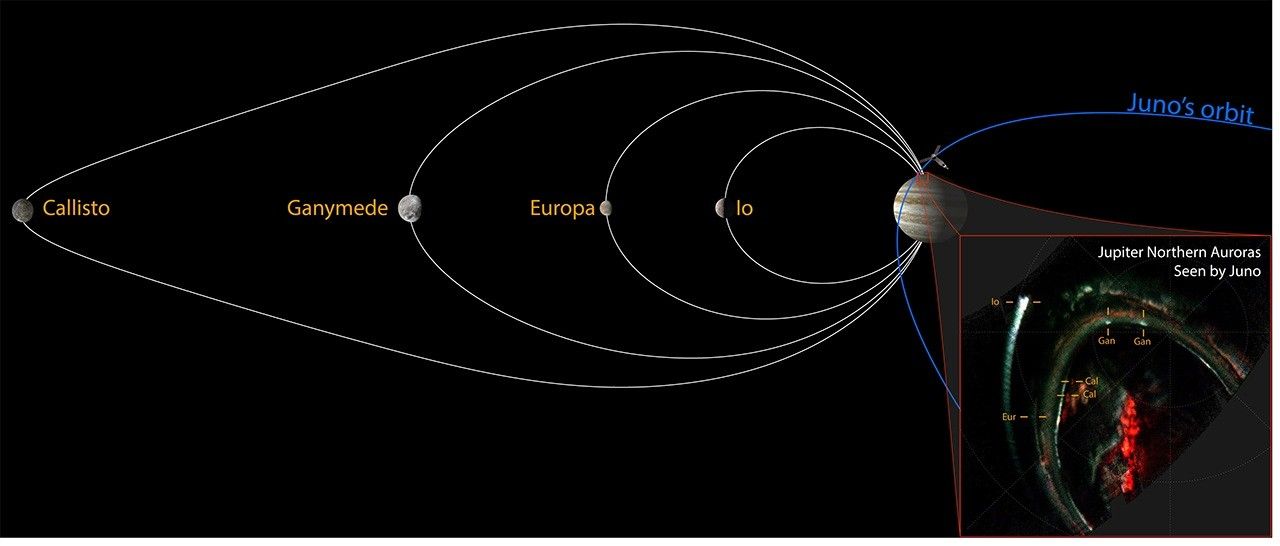Jupiter Auroras and Callisto Footprint Discovery by Juno

Introduction
Jupiter auroras and Callisto footprint are now at the center of an exciting breakthrough in planetary science. For years, scientists knew that Io, Europa, and Ganymede each created auroral signatures in Jupiter’s atmosphere. But Callisto, the most distant Galilean moon, remained elusive — until NASA’s Juno spacecraft finally captured its mark.
The Missing Footprint
While Hubble observations showed auroral “satellite footprints” from Jupiter’s other moons, Callisto’s was hidden. It was both faint and often masked by the planet’s main auroral oval.
A Serendipitous Discovery
During Juno’s 22nd orbit in September 2019, two rare conditions aligned: the auroral oval shifted aside, and Juno crossed the magnetic field line linking Callisto to Jupiter. This serendipitous timing finally revealed Callisto’s faint aurora.
Solar Wind’s Role
Jupiter’s auroras are shaped by solar wind, much like Earth’s northern lights. In September 2019, a powerful solar stream struck Jupiter, briefly pushing the auroral oval toward the equator. This movement exposed Callisto’s footprint and confirmed its presence.
The Complete Galilean Family
With this discovery, scientists confirmed that all four Galilean moons leave unique auroral imprints. Callisto’s signature completes the auroral “family portrait,” deepening our understanding of Jupiter’s magnetosphere.
Scientific Publication
The discovery was led by Jonas Rabia and an international team at IRAP, CNRS, CNES in Toulouse, France. Their paper, “In situ and remote observations of the ultraviolet footprint of the moon Callisto by the Juno spacecraft,” appeared in Nature Communications on September 1, 2025.


Superacejili, huh? Sounds promising. Heard some good things, so I’m gonna check it out. Maybe this will be the one that finally gives me a big win! Come on lucky ace! Check it out here: superacejili
Hello, 888p25 deserves a shout-out! Registration was super easy, and I was able to jump right into playing. I enjoy their selections, check them out here: 888p25
Yo, okfuncasino is pretty cool! Great selection of games, and the sign-up bonus was a sweet deal. I managed to win a little something. Give it a shot: okfuncasino
Hey guys! Just checked out b2xbetlogin – seems like a decent spot to place some bets. The site’s pretty straightforward, no crazy bells and whistles, which I kinda like. Worth a shot if you’re looking for a new bookie. Check it out yourself: b2xbetlogin
Heard through the grapevine about donaldbetafiliados. Looks like a good spot if you’re into affiliate stuff with, well, you know… Donald Bet. Might be worth a look if you’re trying to earn some extra scratch. Learn more at donaldbetafiliados.